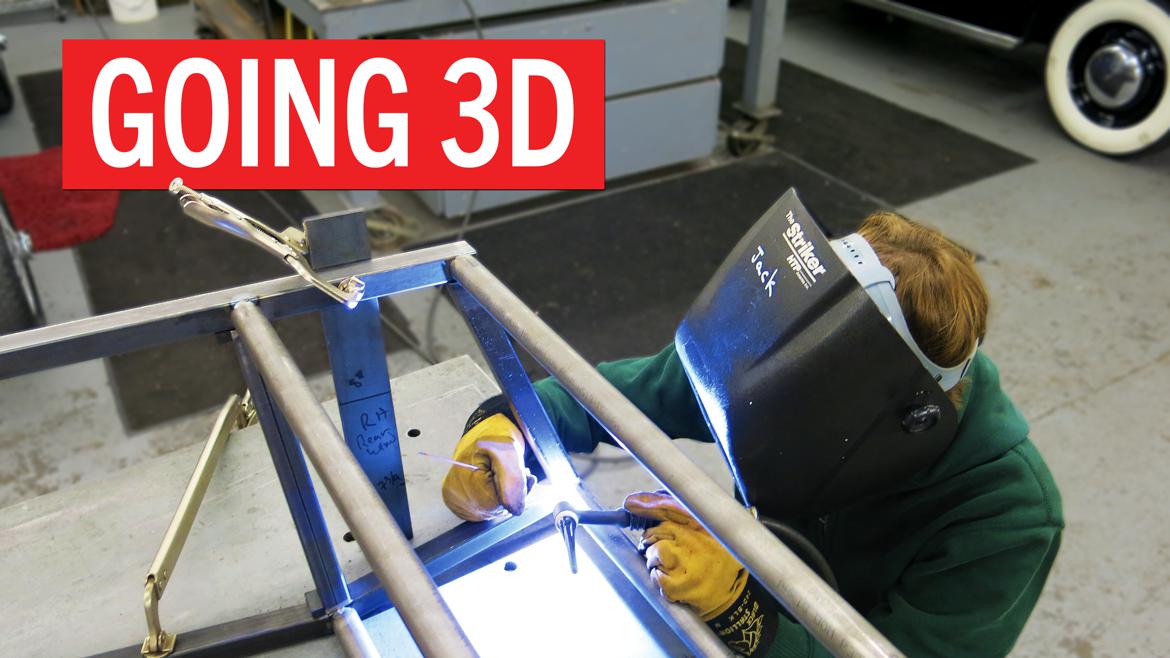Assume an impact driver with 3/8-inch square drive, 1-in socket; the tool at full grunt imparts X ft-lbs on the bolt.
Now, using the *same tool*, if I swap in a *1/2-inch* drive, still 1-in socket, will the tool impart more force on the bolt, or the same as the 3/8-in drive?
My sense is that will impart the *same* X ft-lbs because the anvil in the driver would be the same distance from the OD of the socket, regardless of drive size, but maybe not?? I is not an engineer...
I agree with you. However, i had to take remedial math in college. 4 times. With tutors.
I have torque calibrating stuff at work I could try this idea out on. I don’t know if it’ll work with an impact driver (I think it needs slow and steady application), but I could try it with a 3/8s torque wrench then adapt it to a 1/2 in drive socket and see if there is a measurable change.
Yes and no. Up to a certain point, the torque will be the same. Since the 3/8 drive is smaller, it will start to flex at a lower torque than the 1/2 drive, assuming the same material/ treatment/ hardness/ etc for both anvils. Once you reach that point, some energy will be lost from the flex of the 3/8 and the 1/2 will generate more torque.
The exact threshold depends on the material, the hardness treatment, and a lot of other stuff that I have forgotten since college.
For lug nuts, either should be fine and I doubt you would notice a difference. If you get into chassis bolts, particularly in the rust belt, you could need an impact with enough power to break a 3/8, so a 1/2 could have infinitely more torque.

SVreX
MegaDork
11/23/18 6:43 p.m.
In reply to tomtomgt356 :
I started to give that same answer. Nothing changes until you reach the limits of the metal.
But I think that math is backwards. It’s calculating the torque from the outside diameter. The question is about the inside diameter.
The machine is at it’s limit, which does not change. But working from the center point of the drive out, the 1/2” drive is 30% bigger than the 3/8” drive.
So, the SAME machine turns with the SAME force, but is rotating a larger diameter shaft. If these were pulleys, there would definitely be a different output.
Fine arts major here. Help me out, engineers.
In reply to SVreX :
Yes, the force at the drive connection would be different, but if both are driving a 1" socket on a 1" bolt, the outer diameter is at the 1" bolt face and the torque on the bolt will be the same.

SVreX
MegaDork
11/23/18 7:58 p.m.
In reply to tomtomgt356 :
Right. Makes sense.

Robbie
UltimaDork
11/23/18 8:47 p.m.
I disagree. I think you see a small "driveline loss" with a bigger drive extension.
May be too small to be measurable or whatever, but more mass means less torque at the bolt.
Should be comparable with a direct socket to impact connection, but if you need to use an extension or a deepwell I would go 1/2" if at all possible. 3/8" extensions do not work well for any serious impact usage. Too much spring. Also, 1/2" drive stuff is generally heavier in general, thicker walls, etc, so you get a better transfer of energy.
I don't know the maths but I will stick to my 1/2" drive for anything above a 17mm or 3/4 freedom units generally.
If you remove all the mitigating extraneous factors (flex, slop in the socket, etc) they will both impart the same torque. Torque is measured from the centerpoint of rotation. How it transfers it to the socket and the fastener is irrelevant.
For instance, if you take a 24" breaker bar on that fastener and apply 20 lbs of force to the end of the bar, the center of the fastener sees 40 lb-ft. If you replace that breaker bar with a 24" end wrench and put the same force on it, it still sees 40 lb-ft.
In your example, it won't matter if the arbor of the driver is 3/8" or 3". Since it is measured from the center, it won't matter.
Practically the torque will be the same, technically the extra adapter will "absorb" some tiny amount of torque (which will flex the adapter and create some small amount of friction, eventually all being converted into heat).

































